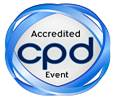
Wilson Engelmann
Unisinos, Brazil
Title: The perception of the risks of nanotechnologies from the analysis of the environment, health and safety publications (OECD): Reflections on the legal assessment of future damage
Biography
Biography: Wilson Engelmann
Abstract
Statement of the Problem: The use of nanoscale is currently growing: in research, industrial production and in the consumer market. There is no state legislative regulation on the matter. There is the rise of self-regulation, as well as the creation of norms by other social actors. The system of Law needs to enter in the context of innovation, granting legal effects to this regulatory production. The temporality of the new forms of regulation and the ability to deal with future risks and damages represent other challenges for the legal area.
Purpose of this study: It is based on the 79 documents of the OECD "Series on the Safety of Manufactured Nanomaterials", is to analyze the perception of risks and the way that the juridicization of the unknown future damages that might be generated from the manipulation of the nanoscale, especially in relation to human health and the preservation of the environment.
Methodology & Theoretical Orientation: the functionalist method will be used in a systemic-constructivist perspective, risk theory (Luhmann) and content analysis (Bardin). Comprehensive keywords were used to enable data collection in the 79 documents, which
are: "risk", "environmental safety" or "environment", "human health" and "manufactured nanomaterial".
Findings: The word "manufactured nano-material" has 4,934 repetitions; "Risk" has 4,214 repetitions; "Environment" has 2,204 repetitions and "human health" has 1,478 repetitions. This shows extreme concern about the risks which nanomaterials could pose to the environment and human health.
Conclusion & Significance: the observed keywords show that manufactured nano-materials may generate risks for the environment and human health, with little concern for the environmental safety, which has only 48 repetitions. For this reason it is important to
structure the framework as a legal risk management tool for nanotechnology companies to gather information and deal with future and uncertain damages. In this scenario is relevant an adequate evaluation of the ethical-social impacts in the structuring of selfregulation.

